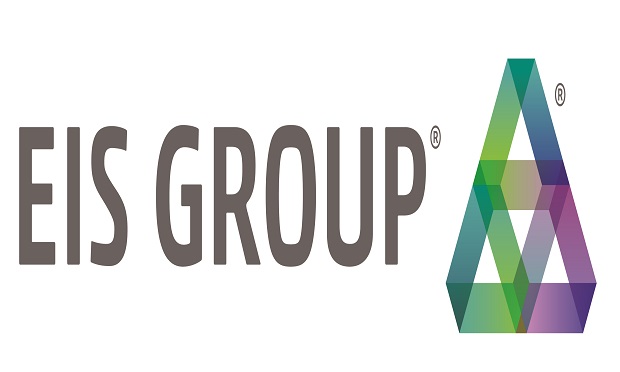
PC360 asked a selection of insurance technology leaders what questions, issues or concerns have developed for them around the COVID-19 outbreak. What follows is a selection of their responses…
(Photo: Shutterstock)

“Insurance producers are trained to build relationships. When face-to-face is no longer possible, many people face a potentially steep learning curve to connect virtually to prospects and clients… This same ‘connectedness’ challenge extends to managing remote workers. Plus, there are tech security concerns if an insurance agency hasn’t built the necessary solid infrastructure.”
— Kitty Ambers, chief growth officer, AVYST and member of the National Underwriter Editorial Advisory Board

“After the safety and health of our employees, our most critical area of concern is, of course, the safety and health of our small business customers. We believe continuing to provide phenomenal service and expert advice is of paramount importance during this time. Our doors remain open and we are thoroughly committed to assisting our customers during this unsettling time. People are unsure about the steps they need to take to prepare their businesses for the unknown circumstances ahead. To address this, we are providing customers with business-specific information to help clarify CDC and local guidance and give direction on how to take action to protect their specific businesses (for example: restaurants, janitorial, contractors, and many more). Given that Next Insurance is 100% digital, our customers and agents continue to interact with absolutely no interruption. Additionally, since our Center of Excellence (which provides support to our customers) is able to work from home, they have maintained normal communications with no reduction in quality or customer satisfaction. The capability to maintain business as usual is important as customers continue to have questions. Some have asked for guidance around if and when they should cancel their insurance coverage.”
— Guy Goldstein, CEO and co-founder, Next Insurance

“COVID-19 has important technology implications for insurers in four key areas. The two immediate concerns for most insurers are enabling employees to move to a work from home (WFH) environment and ensuring digital access for prospects, producers, and policyholders. Even where WFH is not mandated by governments, it is still sound policy to protect employees. The tech required to be productive in a remote environment is critical. For external parties, having good self-service and mobile capabilities is vital. The other two short-term implications are the impact on ongoing IT projects and the potential for increased cyber-risk. IT projects often require collaboration between software vendors, systems integrators, and the insurers’ employees. All must be able to access systems remotely and securely to perform their jobs and to work in concert with colleagues. Cyber-risk is expected to increase with the big shift to WFH, not just for the insurers’ employees but for insurers’ customers as well. The biggest long-lasting implication relates to digital transformations that are underway. SMA expects the pace of transformation to accelerate after the outbreak is contained, due to the heightened awareness of the importance and value of being a digital company.”
— Mark Breading, Partner, Strategy Meets Action

“The bad news is that we can expect the expansion of corporate cyber risk exposure to mirror the spread of COVID-19 across global geographic sectors. As businesses adopt work-from-home policies, there will likely be an increase in the number of potential targets available for exploitation by cyber adversaries, and more reliance on information and telecommunication infrastructures. Just as natural disasters breed scammers who seek to take advantage of a vulnerable population, the COVID-19 crisis promises to unveil its own stresses on our IT infrastructure and resultant brand of opportunistic cybercriminals. The good news is that the anticipated threats and vulnerabilities are largely knowable, preventable, and defensible, and potential insurance claims at the firm level pose little novelty. A potential secondary effect of COVID-19 is cyber risk accumulation. As we gain efficiencies from internet-enabled platforms and software, we increase dependencies and aggregate risk potential. The result is an increase in frequency and magnitude of cascading and systemic harm. There remains an open question, however, as to whether this altered cyber risk environment will be temporary or will mark an inflection point toward a new norm for corporate cyber exposures.”
— Erin Kenneally, director, Cyber Risk Analytics, Guidewire Software

“The sudden outbreak of the coronavirus has caused a global insurance shift. Insurers are scrambling to rapidly transition nearly their entire workforce to operate remotely, to continue servicing customers and agents. It’s been critical to equip insurance personnel with collaboration tools, so that agents and insureds can digitally self-serve as much as possible. Insurers who have already gone fully digital are clearly in a better position compared to those who delayed and are still reliant on legacy systems. Providing accurate coverage information to customers is crucial. Commercial business owners’ operational practices are changing in areas such as food delivery services as a reaction to closures. This is opening up coverage questions where there was not a previous need. Supporting digital technologies to answer quickly and accurately via emerging tools will quickly become the new norm.”
— Colleen Wells, vice president of Product Strategy, Sapiens

“The question we’re hearing most is: ‘How organized and well equipped are you to support our software implementation projects?’ Fortunately, we don’t have to dig deep for the answer. As an insurance technology vendor with global operations, we have a heavy-duty business continuity plan that ensures a high level of security, uptime, resiliency, and availability of our systems.
Working in global markets makes us well-for well-prepared for work-from-home or even completely off-site situations. Plus, our CI/CD tools and processes allow us to operate globally, virtually, and to provide high-quality and continuous services. Multiple secure VPN servers and data centers with redundant internet connections mean our employees can maintain the service levels and support our clients need right now. All of which helps keep our employees, and our customers, safe and healthy. The current situation is evolving and we will keep monitoring it to ensure we have appropriate resources, processes, procedures, and protocols in place.”
— Jim Caruso, executive vice president of Worldwide Professional Services, EIS Group

“There’s actually a lot of upside to this ‘new normal.’ Our infrastructure is set up to allow team members to work remotely. They can access client files with WorkSmart by Vertafore, route calls directly to their cell phones, and our leaders are able to manage their team’s work volume. Right now our biggest concern is the amount of mail we still receive because not all carriers have adopted eDocs. We’ve cross-trained more people to process and scan incoming mail in case we all have to work from home. In fact, this is a great time to continue learning. Our producers are getting a crash course in explaining why coverage for temporary closures due to COVID-19 likely isn’t there, our team is finding new ways to conduct remote meetings and to connect and collaborate with their teammates, and we are learning new ways to trust our systems.”
— Jessica Jeffress, senior director, P&C Client Services, Peel & Holland and chairman-elect, NetVU

“The immediate challenge for any organization right now is safety and wellbeing of employees and how do they make alternative work arrangements to keep the necessary work rolling (for insurers to keep delivering on promises they have to their insureds). Not everything can be done remote especially onsite evaluations, meeting with claimants/attorneys etc and there has to be some contingency plan to solve for this in short term. Due to COVID-19 some insurers have already acted swiftly and advised associates to work from home; however, that would mean reduced capacity for certain tasks which needs presence onsite. It will be a big onus on Insurance operational leaderships on how do they prioritize cases to be worked on during this scenario and maintaining the right communication with Insureds. They will have to equip their associates with right tech (Laptop/ IP Phones/Stable internet connections) etc. to ensure the continuity.”
— Deepak Kumar, senior engagement manager, EXL Service
Businesses worldwide are adjusting to “the new normal” brought on by the global coronavirus pandemic.
Not unlike the disease itself, InsurTech companies and insurance technologists are not immune to the challenges and business process changes required to keep operations running as smoothly as possible during this crisis. Most were quick to assemble online resource pages and webinars to educate and inform around their COVID-19 impact and response.
Cybersecurity threats
The Private Risk Management Association was among the industry organizations to raise a red flag regarding the cybersecurity risks linked to the uptick in people working from home during this period when individuals and families are sheltering in place to help prevent the spread of the virus.
“Work-from-home employees are targets for phishing expeditions,” PRMA said in a statement. “These expeditions implant malware in a computer that gives hackers a chance to demand ransom or obtain a company’s data.”
Moody’s also predicted a spike in cyber events. Specifically, the credit ratings agency said businesses can anticipate a spike in coronavirus-themed phishing attempts and malware risks, disinformation campaigns, and attacks that degrade the health care response to COVID-19
“Previous cybersecurity incidents have shown, criminals will use a headline-grabbing event to try to elicit risky cyber activity from their victims,” Moody’s Assistant Vice President Leroy Terrelonge said in a prepared statement. “When employees fall victim to phishing attacks, business disruptions with material credit effects can ensue. And with many employees working from home, the need to keep operations going as efficiently as possible may push some issuers to forgo certain security measures used during normal operations.”
Remote workers hunker down
According to the British technology company Comparitech, the major cyber risks facing remote employees include the use of unsecured Wi-Fi networks, the use of personal devices and networks for business purposes, and scams that target remote workers. Aimee O’Driscoll, the company’s tech writer and editor, compiled the following tips to help businesses mitigate remote worker cybersecurity risks:
- Use strong passwords
- Set up two-factor authentication
- Use a VPN
- Set up firewalls
- Use an antivirus software
- Secure your home router
- Install updates regularly
- Back up your data
- Beware remote desktop tools
- Look out for phishing emails and sites
- Watch out for work-from-home scams
- Use encrypted communications
- Lock your device
Business continuity concerns
Applied Systems published a blog post on March 12 telling its clients how the technology provider planned to keep running amid the pandemic and subsequent shelter in place regulations. The company emphasized that although its employees are now working remotely, it intends to continue offering 24/7 services and support. Among other things, Applied encouraged clients to:
- Make a crisis management plan;
- Consider how technology can support business momentum;
- Take extra steps to protect data; and
- Communicate regularly with customers.
Novarica also used its blog, newsletter and webcasts to educate clients and partners on such topics as the pandemic’s potential insurance industry impact. In a March 13 blog post about how carriers can prepare for what’s to come, Rob McIsaac, the company’s executive vice president of research and consulting and practice leader for life/annuity/benefits, offered these tips for insurance carriers who are crafting long-term work-from-home policies:
- Determine whether the policy is “work from home” or whether it is more accurate to describe it as “not working from the office.” Assuming the latter, organizations need to guide employees on how they can be productive and secure at the same time. Leaving the details to individual employee creativity or imagination can lead to surprising, detrimental results.
- Ensure that the equipment the organization provides to employees when working from home (or not in the office) is sufficient to address their tasks. Companies should deploy and test VPN capabilities at scale if security is paramount, for example. Softphones that employees can use anywhere there’s a Wi-Fi connection can also be valuable as work is virtualized and moved between people/organizations in response to changes in circumstances and work patterns. Avoiding rigid structures and fixed locations for work can enhance adaptability in uncertain times.
- Replacing the usual social network employees have for informal, in-person communication with a planned approach for virtual information-sharing can also be an important step to maintain organizational focus and morale. This is one of the best practices from major innovation or transformation events — creating a closed-loop communication process to ensure that the messages that leaders send are the same as the messages the organization receives. This will have a significant impact on outcomes and can reduce passive-aggressive behavior and organizational anxiety. It can also offset the impact of 24/7 news channels providing the only soundtrack for associate lives. Virtual town hall sessions can provide important connections for employees who may feel disoriented after the severing of typical communication networks.
The slideshow above includes verbatim responses from insurance technologists about how they’re weathering the novel coronavirus crisis.
Related:




 InsurTech Center
InsurTech Center

















 Copyright © 2025 ALM Global, LLC. All Rights Reserved.
Copyright © 2025 ALM Global, LLC. All Rights Reserved.